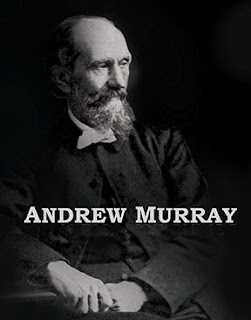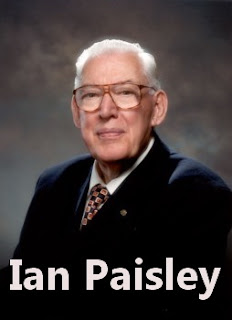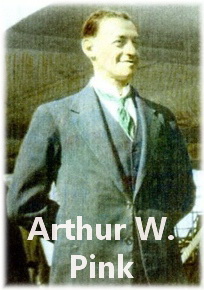This
chapter has ten subdivisions.
Roots.
Two
paragraphs in this section, beginning with a few comments about Danish
philosopher Soren Kierkegaard of “leap of faith” fame.
Karl Barth.
Three
paragraphs in this subsection. Karl Barth was a Swiss theologian. He wrote a
commentary on Romans, a book titled The Word of God and the Word of Man,
The Humanity of God, and several summaries of his theology: Credo,
Dogmatics in Outline, The Kingdom of God and the Service of God,
and Evangelical Theology. His so-called masterpiece was the Church Dogmatics
in fourteen large volumes. It is the largest systematic theology ever written in any
language from any perspective.
Barth on
Scripture.
Mention is
made of dialectical theology and crisis theology. Barth claimed
to have high regard for the Bible but said that Scripture points to, contains,
or becomes the Word of God rather than is the Word, by its very nature. Barth
believed in the old liberal view of Scripture rather than the historical Reformed
orthodox view.
Barth on
God.
His
theology proper and Christology improve old liberalism but is still not fully
orthodox Calvinism.
Barth on Salvation.
Barth said
that the doctrine of election is the sum of the gospel, but he had a radically
different theory than Calvin and historic Calvinism. He denied absolute foreordination
and the twofold will of God. He put forth a purified supralapsarianism or super–supralapsarianism,
centered on Christ, who is the only person who is elected. The work of Christ
on the cross was not limited to the elect, nor is it penal substitutionary
satisfaction like Calvin or even Arminius proposed. This strongly implies that
Barth believed in ultimate universal salvation. But he neither asserted nor
denied it as such. Some think he caught that there is a Hell (but nobody is in
it) or that preaching on Hell is only a useful ruse to move people to a crisis
of faith. Christ will be Judge to restore order in the universe, but not
necessarily to consign lost sinners to Hell. In sum, he taught a radically
different soteriology than historic Calvinism.
Emil Bruner.
Bruner was
also German-Swiss who taught at Zürich and then in Tokyo. He was more liberal
than Barth in several ways, such as in rejecting the virgin birth. Bruner
denied and scorned the idea of biblical inerrancy. He denied the Pauline
authorship of the pastoral epistles. He believed Scripture has myths and
contradictions. He believed Adam and Eve were non-historical myths. He thought
Moses did not write the Pentateuch, which was compiled by scribes centuries
after the prophets wrote their books. He believed two later editors wrote
Isaiah. He felt the Gospels contain myths, such as Luke’s record of a Roman
census and Matthew’s star of the wise men. Even the gospel accounts of the
resurrection appearances are contradictory.
Scottish Neo-Orthodoxy.
Five
paragraphs. A form of Neo-Orthodoxy began to appear in the Church of Scotland
after World War II. They disliked the Westminster Confession of Faith.
American Neo-Orthodoxy.
Reinhold
and Richard Niebuhr came out of what was left of the old German Reformed Church
in America and develop what some consider an American form of Neo-Orthodoxy.
They interacted very little with previous Calvinists and were as far from the Reformed
mainstream as their European counterparts. Evangelicals resisted Neo-Orthodoxy
for decades, but some eventually capitulated and claimed to be both evangelical
and semi-Barthian.
Appraisal.
Neo-Orthodoxy
may be considered one of Calvinism’s two errant and illegitimate children. The
other is Arminianism. Both arose as reactions to and rejection of true
Calvinism and resembled each other more than either wishes to acknowledge (e. g.
their mutual rejection of the TULIP
doctrines and insistence on God’s universal dealing with man. But at least
Arminius and Wesley were evangelical, which Neo-Orthodoxy is not. Nor is Neo-Orthodoxy
another form of Amyraldism,
which may not have been in the mainstream, but at least was in the true Reformed
family.

Here is a summary:
Nothing could be more untrue to history than to say that the
theology of Barth and Bruner is basically similar to that of Luther and Calvin.
Dialecticism is a basic reconstruction of the whole of the Reformation Theology
along critical lines. A Calvinist should not object to Lutheranism in Barth;
there is no Lutheranism there. A Lutheran should not object to the Calvinism of
Barth’s doctrine of election; there is no Calvinism in it. A Calvinist should
not object to the Arminianism in Barth's universalism; there is no Arminianism
in it.[…] There is no more Christianity and no more theism in Bruner than there
is in Barth.[…] If evangelical Christianity in general ought to recognize in
the Theology of Crisis, a mortal enemy, this is doubly true with respect to
those who hold to the Reformed faith.[…] The Theology of Crisis is a friend of
Modernism, and a foe of historic Christianity.
Conclusion.
“Van Til
was right. Neo-orthodoxy is neither another form of Calvinism nor of true
Christianity, but is the new Modernism and pseudo-Christianity. It is not even
as evangelical as the Arminianism of John Wesley, for at least Wesley believed
in the fundamentals of the gospel. In sum, Neo-Orthodoxy is a bastardized
theology that wrongly claims to be Reformed. It is well to be warned.”


















































